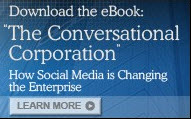Social Media and Mobile Devices Again Leading the Way in Crisis Events
Posted on April 21, 2011. Filed under: Social Media | Tags: issues management, Social Media, social networks |
When the massive natural disaster occurred in Japanon 11 March the value of mobile devices and social media were once again brought to the forefront for capturing and disseminating the latest news quickly. Users were not only able to get the latest news through social networks but also send and receive updates, prompt help for those in need and share an unprecedented amount of eyewitness video footage.
Social networks sites were not only helpful for retrieving news, but also served as a form of community bulletin board to find loved ones after the earthquake. As telephone lines were jammed or no longer in service, those affected were able to use sites such as Skype, Twitter, Facebook and Mixi to inform others of their whereabouts and status. Within an hour of the earthquake, 1,200 tweets per minute were coming from Tokyo alone. By day’s end over 246,000 messages were published under the topic “Earthquake in Japan”. And in one day, 4.5 million people changed their status to include “earthquake”, “Japan”, or “tsunami”.
Social networks also supported the efforts of Kameda Medical Center in Chiba. The medical center agreed to treat victims of the earthquake, but soon found itself running out of food and medical supplies, and no truck or ambulance would come close from fear of radiation at the nearby Fukushima reactors. Hospital director Nobuo Hiwatashi issued an appeal through the Mainichi Japan newspaper with little response. Finally, the hospital posted two urgent pleas for help on the Twitter stream of US Ambassador John Roos, instantly contacting Roos through his mobile. An hour or so later, evacuation of the patients were organized byJapan’s Ground Self-Defense Forces.
Local governments and agencies started using social media as a tool, including the local government in Mitaka city in western Tokyo, which put information on Twitter to inform local citizens about electricity blackouts in real-time. The US Government also posted advisories and updates to its citizens residing in Japan through Twitter and Facebook.
Blogger “konnichiwa-japan” explained in a nutshell why Twitter became so popular: “as the days progressed, I found the Tweet feed from people actually on the ground in affected areas to be the best source of news. Links from Twitter showed me NHK News’ English Upstream live feed, real-time reporting of radiation levels, Upstream of Geiger counters, and a variety of other useful sites that I never would have gotten from traditional TV or newspaper media.”
The natural disaster in Japan demonstrated how social networks have significantly impacted the ways in which we communicate and connect with each other. It was a life saver to many that had no ways of reaching other channels for help. As an instrument for change, individuals were able to not only trigger action and connect with friends but have their stories shared with millions across the globe.
Read Full Post | Make a Comment ( 1 so far )Rules of Engagement: Greater China Social Media Landscape
Posted on March 29, 2011. Filed under: Public Relations, Social Media | Tags: brand reputation, China, digital devide, expectation management, Hong Kong, Lars Voedisch, media landscape, online conversations, Social Media, social networks, Taiwan, wiki |
Social Media is on everyone’s minds today and has also greatly evolved the current media landscape. Naturally though, the digital divide among communicators is growing: on one hand, there are those that are just starting to do baby steps to navigate through the online space; on the other hand, you have those creating the rules of social media while ‘riding the wave’.
However, this is first and foremost an internal problem. What’s more crucial, and to a certain extent even scary, is that our brands’ employees, customers, and general stakeholders are getting more and more demanding. So how should we deal with growing expectations in a diverse and ever-evolving (social) media landscape?
At a recent interview with Mercy Su for the Digital Media Across Asia Wiki of the Singapore Management University, I had a take at these questions in general and specifically tackled where Greater China and in particular, Hong Kong and Taiwan, are moving in the social media space.
Did you know that though both territories’ social media users are very outspoken, the majority of online comments is still rather positive?
While it might not be a surprise that the main discussions evolve around politics, daily-life, celebrities or brands, it’s important to see how especially mainland China’s social media platform rather significantly grow their influence in the Hong Kong and Taiwan markets.
Lars Voedisch is a media consultant based in Singapore.
![]()
![]()
![]()
![]()
![]()
![]()
![]()
![]()
Using Trust Rather than Volume in Social Media, Part IV
Posted on February 26, 2010. Filed under: Social Media | Tags: brand reputation, media relations, Public Relations, social networks |
The Resolution
So let’s note that individuals are seeking to fuse themselves to tribes that express parts of their identity, and can do so in incredibly quick, fine-grained and extensive ways. From the perspective of tethering your brand’s value, we can see that broadcasting out from a Facebook page or Twitter feed is far from ideal. Nor should you spend your time seeking to unduly influence credible sources.
Instead, the counter-intuitive “concrete-fluidity” of tribes and clusters of tribes recommends you work hard to understand and identify what an “abstract,” temporary, recurring influencer in a tribe or cluster looks like; the template of what a person with credibility, or a credible presentation, would be like. And then reach out to that sort of person.
It’s not that difficult to do; Using media monitoring software, you can identify A-list, B-list and even long-tail blogs talking about specific issues and products, and monitor them closely to identify the correct targets.
The best way to reach out is to pitch things such a person really might be interested in. (Popular freelance blogger Lindsay Robertson offers some tips on how to do this here.)
High value content for blogs, message boards, Twitter feeds and even Facebook groups and streams filters out of individuals and core groups into larger networks as much or more than it filters the other way. It has to, because messages that tether to the mind come from sources who, though ‘small’ in reach, are trusted as excellent filters.
In contrast, broadcasting your message to high traffic sources who lack credibility, such as a tweet stream, or to those who don’t view you credibly, can only rarely do more than create fleeting true opinions, in one ear, and soon enough, out the other. And as we’re constantly reminded, credibility is and will always be a major issue for social media.
One last thought; the fluidity in tribes allows for the possibility of multiple concurrent or consecutive efforts at tethering to the members of a tribe via credible people. And if a brand becomes established, it not only maintains its position in the tribe, but it increases the chances of being carried over into other tribes and clusters as people move on. Some of these people will not occupy credible-source positions in their new tribes, but others will.
Damien DuPont is a report writer and quality assurance specialist in the Dow Jones Media Lab and is based in New York.
Read Full Post | Make a Comment ( None so far )Using Trust Rather than Volume in Social Media, Part III
Posted on February 25, 2010. Filed under: Social Media | Tags: brand reputation, social networks, tribes |
The Contradiction
Outside of “all-in-one” sites like Facebook, there are myriad sites dedicated to pop culture, multimedia, and social and political causes, which allow people to extend their identity in ways and at speeds that would have been impossible to members of ancient tribes. These web sites are the home of credibility, and they must be treated as such. Unfortunately, as Ann Taylor Loft is finding out, it’s inevitable that many of them will be corrupted.
The contradiction underlying these types of sites – that they are the potential customer’s source of credible information on your product, but also highly susceptible to the appearance of corruption, – has an interesting effect on tribes: tribes are much more fluid in membership, yet remain concrete and credible. This is clear from the Ann Taylor case. That brand was likely a member of many tribes, and so many web sites would have been a good fit for its attempts at “tethering.” Instead, the situation has probably led to the discrediting of many sources where these tribes would have gone for information on the brand, and so traffic will move to other sites, some potential customers will be put off and some existing customers may shun the brand. But it’s a safe bet that new sites will step up and service these tribes, and that other brands will fill in the void. And new voices will become credible and so shape how this happens.
Something like this dynamic happens on sites like Netflix, which shows users what is popular where they live, as well as “similarity scores” between their friends and even with complete strangers. It’s interesting to see novelty and disagreement among people in your core group, but it’s also sometimes exciting to find that a complete stranger so closely matches one’s tastes. Both cases allow for enjoyable discoveries of actors, directors and genres, which can contribute to the growth and to the fracture of a tribe. This exemplifies how credibility, tethering, and the fluidity of tribes work together.
Come back Friday for the final installment: The Resolution.
Damien DuPont is a report writer and quality assurance specialist in the Dow Jones Media Lab and is based in New York.
Read Full Post | Make a Comment ( None so far )Using Trust Rather than Volume in Social Media, Part II
Posted on February 23, 2010. Filed under: Social Media | Tags: brand reputation, Facebook, MySpace, social networks |
Tethering and Tribal Differences
Let’s imagine the potential customer as a tree comprised of three rings radiating outward 1) their core; close friends, family and the activities and brands they identify themselves with and are strongly tethered to, 2) extended networks of acquaintances and their interests, such as exist on Facebook or LinkedIn, which provide on occasion some interesting new item or experience, 3) strangers, brands and activities that exist on the periphery; things they may have seen or heard of in passing but paid no attention to.
If we can understand these areas, we can make it to our advantage rather than disadvantage that the inner circle is hardest to access and the outer circle is least trusted but a source of personal expansion. Then we can turn to understanding credibility.
A popular and useful way to look at the situation is to think of people as using the web to join and establish groups analogous to traditional tribes. According to RAND theorist David Ronfeldt, these initial groups created and legitimized identity and fostered a sense of belonging, and did not admit of hierarchical leadership. This maps very well onto what we’ve just sketched and will help understand the issue of credibility.
For the average consumer, establishing their internet presence and locating their core friends, family, activities and brands is very simple. It does not take long to find blogs, message boards, media outlets and even beloved brands on the web.
Core-building was the original attraction behind Facebook, what put it over MySpace; on Facebook you could establish and solidify your core, and simultaneously connect to and have some distance from your extended network. MySpace was simply too open, exposing your core tribes to the world of strangers, a world you almost always want nothing to do with, with a very low payoff.
Facebook is now working to put a person’s core tribe and their extended network of tribes as close as possible, and pull the world of strangers into this structure as well. It remains to be seen if this will work, but I sincerely doubt it. It’s simply more likely that it will turn into a much better done MySpace, which will turn off many users, than it is that it will get 300 million profitable consumers to bare their souls to the world.
Come back on Thursday for Part III: The Contradiction.
Damien DuPont is a report writer and quality assurance specialist in the Dow Jones Media Lab and is based in New York.
Read Full Post | Make a Comment ( None so far )Using Trust Rather than Volume in Social Media, Part I
Posted on February 19, 2010. Filed under: Social Media | Tags: brand reputation, Edelman Trust Barometer, Facebook, social networks, trust |
Trust Tethers Your Message
Edelman’s annual ‘Trust Barometer’ came out recently, revealing trust in business has risen around the world since 2009, and is up 18 points in the U.S. In addition, Edelman also reports that nearly the same share of respondents around the world (41%) think conversations with employees are credible sources of information about a company as think that of conversations with “persons like yourself” (44%). Just 19% of respondents said social networking sites were reliable sources. When you add that 83% of respondents indicated that the two most important factors to corporate reputation were having “transparent and honest business practices” and being “a company they can trust” (25 points higher than being a company who “prices fairly”) a picture of what all this means begins to form.
The Greek philosopher Plato observed that though having “true opinions” is useful, because true opinions tend to float out of your mind quickly, they’re not especially valuable until you tether them with chains of “reasons why.” And “tethering” reasons why are exactly what the data strongly suggests the vast majority of Facebook “friends” and semi-celebrity tweeters are incapable of giving the average consumer. These sources can only give quick “true opinions,” impressions that don’t tether a brand’s true value message to a potential client.
But because potential customers make little distinction between the ability of a peer to provide “reasons why” a brand is good and the ability of a knowledgeable company employee to do the same, the first lesson here is the great value of getting a credible and knowledgeable brand rep near a client. Of course this still leaves the fundamental problems of “where?” and “how?” so the next installment will provide framework for answering this. The final two installments will explain how to unravel the problem.
Come back on Monday to read more.
Damien DuPont is a report writer and quality assurance specialist in the Dow Jones Media Lab and is based in New York.
Read Full Post | Make a Comment ( 2 so far )


